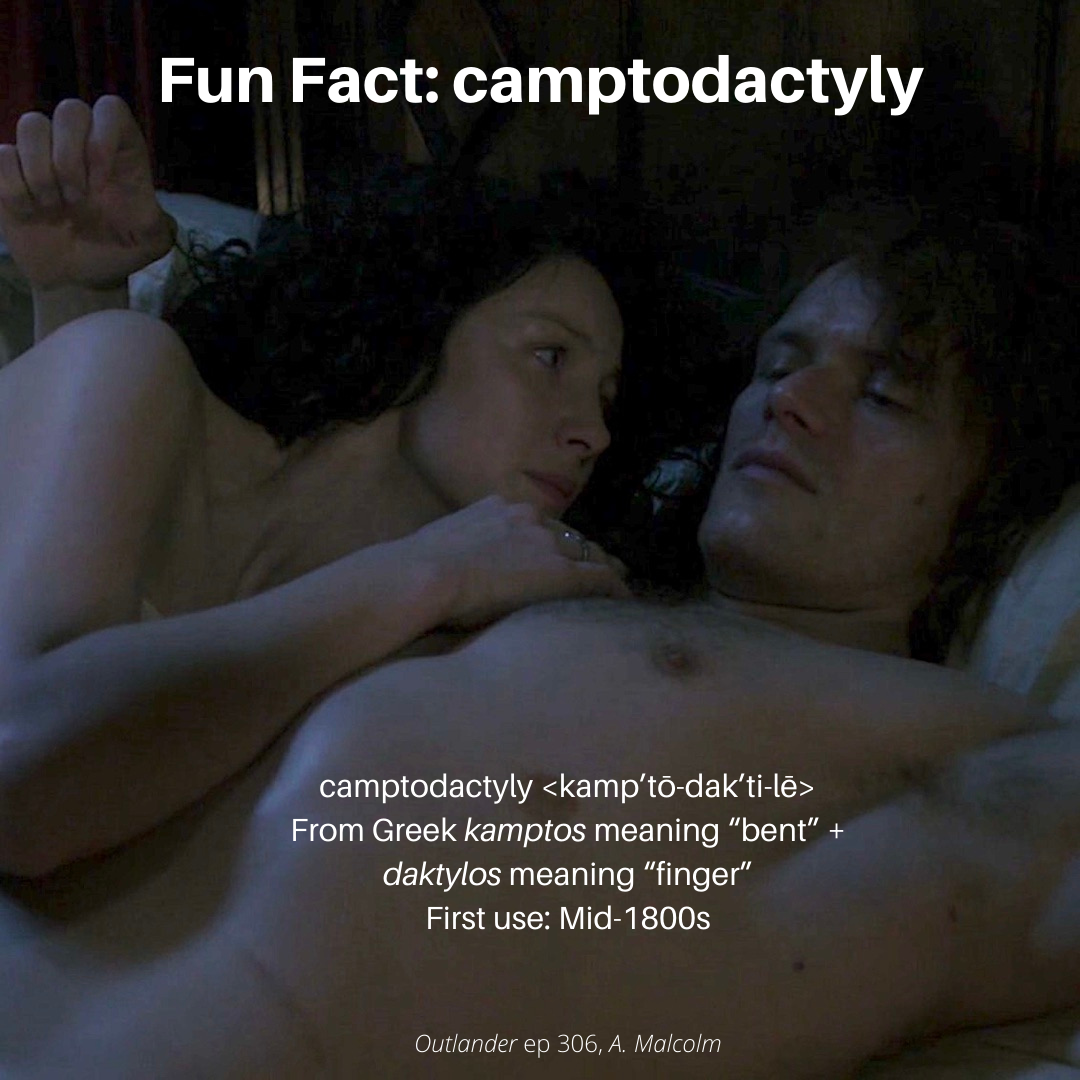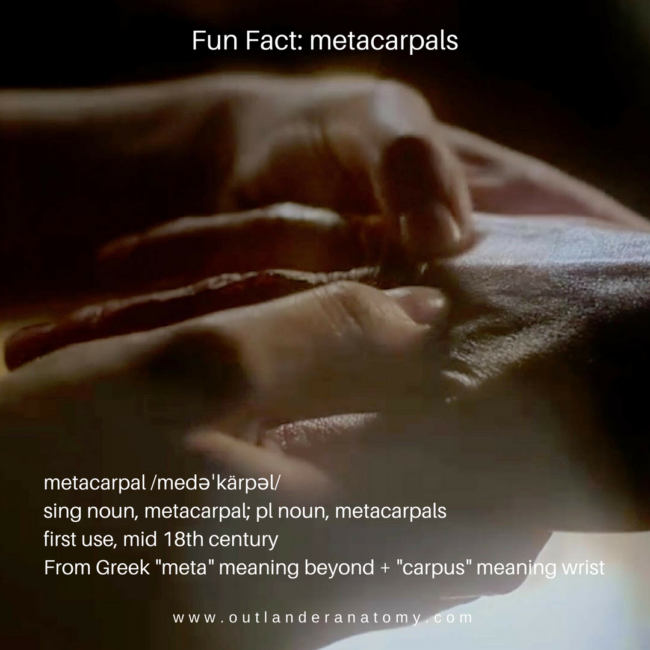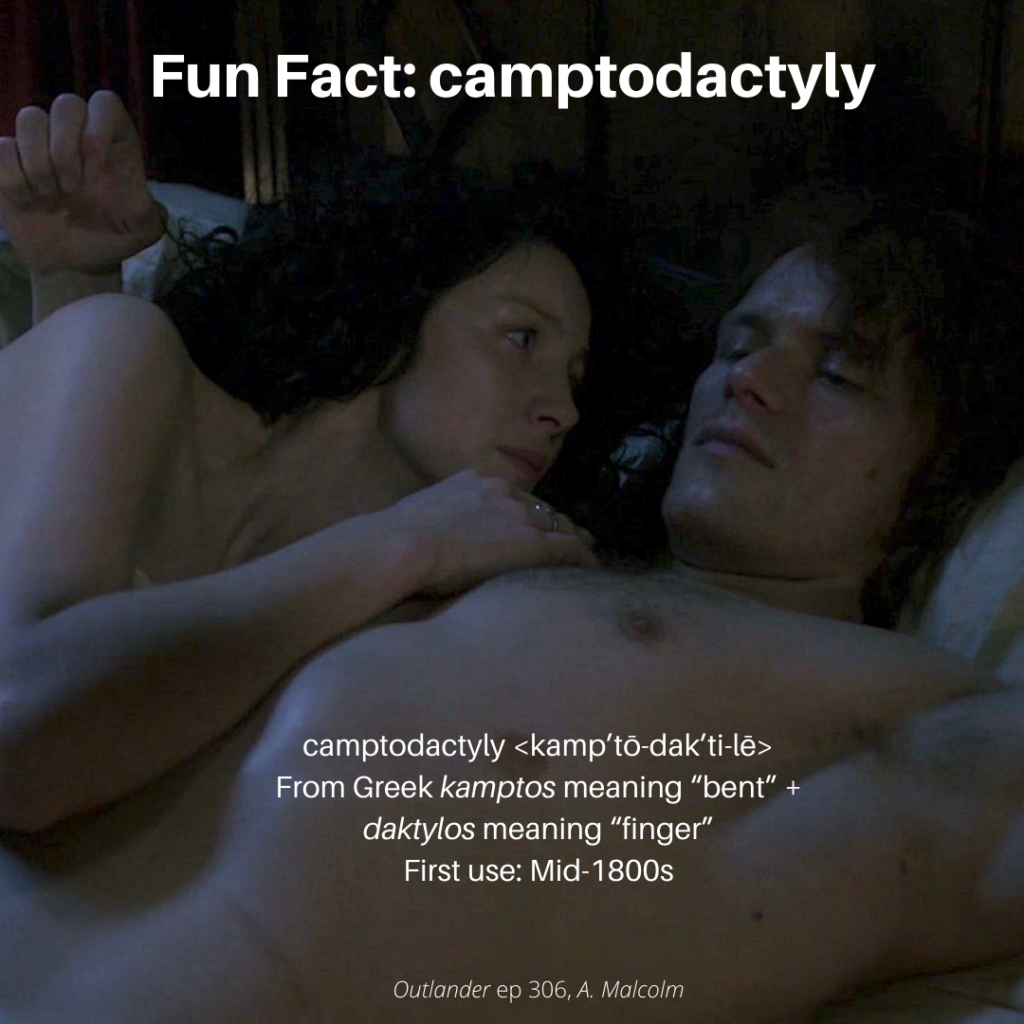
Anatomy Def: Camptodactyly is a condition wherein one or more fingers are permanently bent; the little finger is always affected.
Outlander Def: Steeped in post-coital bliss (Voyager), Claire reflects on her crooked pinky finger, informing Jamie, it is a genetic gift from her mum that she passed onto Bree (see below).
Learn about the pinky finger (5th digit) in Anatomy Lesson #23, Harming Hands – Helping Hands – Healing Hands. Warning! This is a very long lesson because, well, because the hands are anatomically very complicated!
I wager book readers forgot about Claire’s crooked pinky finger – I did! 😜 A follower on Twitter reminded me just days ago! So, here goes:
Humans typically have five digits on each hand. But, naming these appendages presents a dilemma: 🤔
-
- US anatomists name a thumb and four fingers (index is #1 – pinky is #4).
- Some European anatomists consider the thumb to be a finger (thumb is #1 – pinky is #5).
Ergo, how many fingers does a hand usually have? Clearly, the answer depends on who does the counting!
Stating the obvious, it is safest, especially in a medical setting, not use the term, “finger.” Instead, name the appendages “digits” and sequentially number them as digit #1 (thumb) through digit #5 (pinky).
Hand surgeons who helped teach my gross anatomy course didn’t use any numbers when preparing a patient for surgery to avoid mixups and mistaken surgeries! 😱 Rather, they used thumb, index, middle, ring, and little.
Now, for some quick anatomy: The little finger (plus index, middle, and ring fingers) has three bones (phalanges). Each adjacent pair of phalanges meet at an interphalangeal (IP) joint. The IP joint nearest the wrist is the proximal interphalangeal joint (PIP); the one furtherest from the wrist is the distal interphalangeal joint (DIP).
The thumb is different because it has only two phalanges and one IP joint. Hence, US anatomists don’t consider the thumb to be a finger because of these anatomic differences.
Try This: Find the PIP and DIP joints on your index, middle, ring and little fingers. Find the IP joint on your thumb. Got it? Yay! 👍🏻
As mentioned above, camptodactyly always involves the 5th digit (pinky finger) which is permanently flexed at the PIP joint (see image, below)!
Claire’s mother had the crooked little finger, Claire has it, and her daughter has it, too. This is not surprising as the gene for camptodactyly may be passed to the next generation by either parent. If a person carries the gene, it may be expressed in one hand, both hands or neither.
And, if the permanent flexion is 30º or less, the hand usually functions normally.
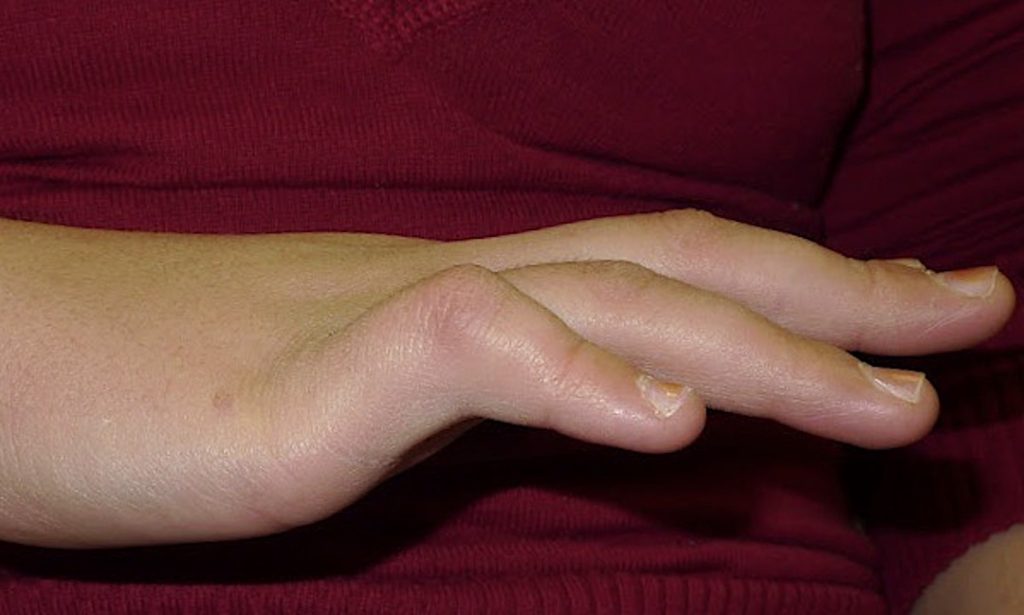
Just to throw a monkey wrench into the issue….. Claire may have had a different condition known as clinodactyly (Greek: to bend + finger), another inheritable trait involving a crooked 5th digit.
However, clinodactyly is characterized by the pinky finger bending toward the adjacent ring finger. Yet another difference between the two conditions is that clinodactyly may occur at the DIP joint or the PIP joint, or both!
Because Claire became a skilled surgeon, we can safely assume that no matter which condition she had, the crooked right little finger did not create a hinderance to her handiwork!
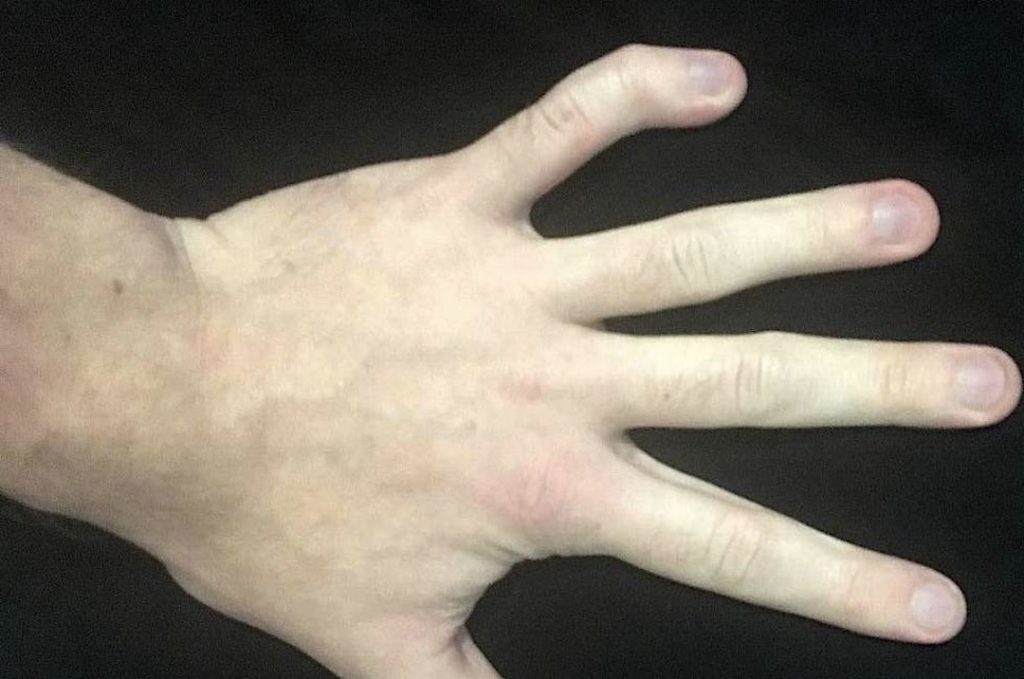
Clinodactyly is a congenital trait that is present at birth. It can occur on its own or as part of a genetic syndrome.
See: Claire’s right little finger in Outlander episode 306, A. Malcolm. The episode does not include Claire’s musing about her crooked pinky finger for good reason: It would be difficult to display such a condition throughout all seasons of Outlander!
Read: But Claire does acknowledge her finger to Jamie in Voyager book.
“Her nails are like yours; square, not oval like mine. But she has the crooked little finger on her right hand that I have,” I said, lifting it. “My mother had it, too; Uncle Lambert told me.” My own mother had died when I was five. I had no clear memory of her, but thought of her whenever I saw my own hand unexpectedly, caught in a moment of grace like this one. I laid the hand with the crooked finger on his, then lifted it to his face.
Which condition did Claire have – camptodactyly or clinodactyly? Only Herself knows for sure! 😉
The deeply grateful,
Outlander Anatomist
Follow me on:
- Twitter @OutLandAnatomy
- Join my Facebook Group: OutlandishAnatomyLessons
- Instagram: @outlanderanatomy
- Tumblr: @outlanderanatomy
- Youtube: Outlander Anatomy
Photo and Video Credits: Sony/Starz; www.congenitalhand.wustl.edu; www.healthline.com

